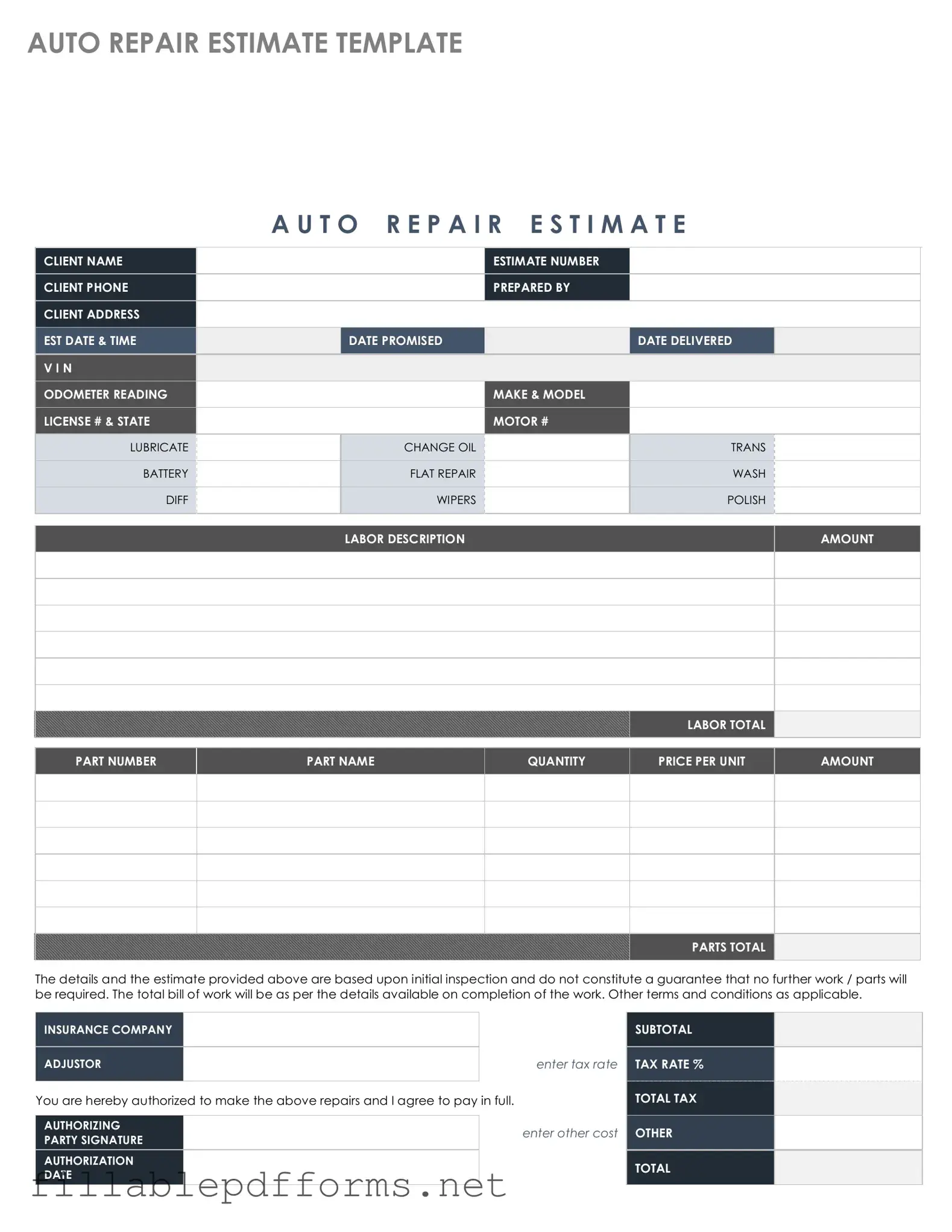Auto Repair Estimate PDF Template
The Auto Repair Estimate form is a document that outlines the anticipated costs for vehicle repairs. This form serves as a crucial tool for both customers and auto repair shops, providing transparency and clarity regarding the expenses involved. Understanding this form can help vehicle owners make informed decisions about their auto repair needs.
Launch Editor Here
